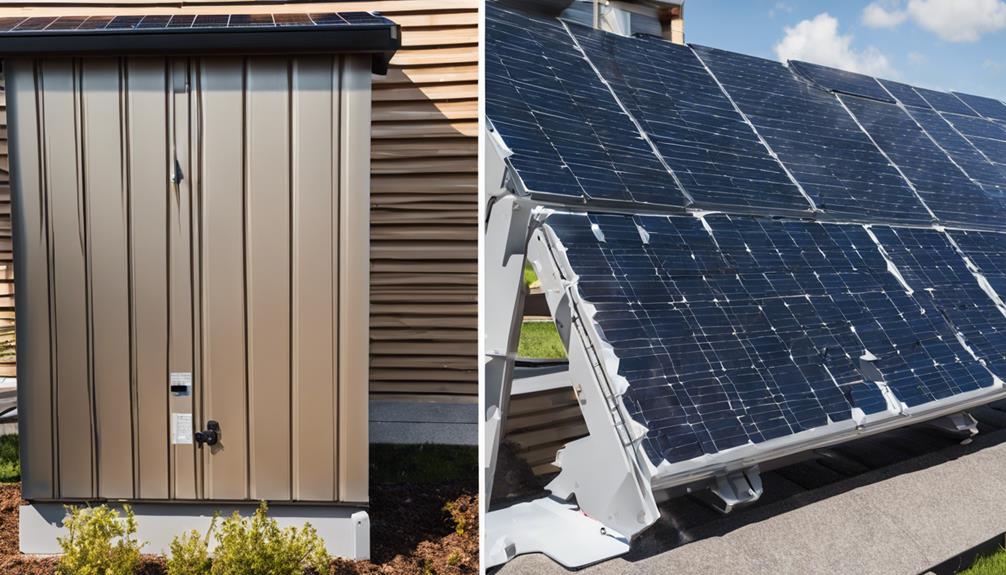
As the world shifts towards sustainable energy solutions, solar panels have emerged as a popular option for homeowners and businesses alike. Among the various options available, the 450 watt solar panel stands out for its efficiency and power generation capabilities. In this article, we will explore the benefits, features, and considerations of using 450 watt solar panels, providing you with everything you need to know to make an informed decision.
Understanding the Basics of Solar Panels
Solar panels are devices that convert sunlight into electricity. They are made up of photovoltaic (PV) cells that absorb sunlight and generate direct current (DC) electricity. This electricity is then converted into alternating current (AC) by an inverter, making it usable for your home or business. The wattage rating of a solar panel indicates its power output; hence, a 450 watt solar panel can produce up to 450 watts of electricity under optimal conditions. Understanding how these panels function is crucial for assessing their suitability for your energy needs.
The Advantages of Using 450 Watt Solar Panels
One of the primary benefits of 450 watt solar panels is their efficiency. With a higher wattage output compared to lower-rated panels, they can generate more electricity in a smaller space. This efficiency is particularly advantageous for homeowners with limited roof space. Additionally, these panels can contribute significantly to reducing electricity bills, as they produce a substantial amount of energy that can offset your reliance on traditional power sources. Moreover, using solar energy reduces your carbon footprint, making it an eco-friendly choice for energy consumption.
Key Features to Look For in 450 Watt Solar Panels
When shopping for 450 watt solar panels, it’s essential to consider several features that can affect their performance and longevity. Look for panels with high efficiency ratings, typically over 20%. Also, check for durability features such as tempered glass, corrosion-resistant frames, and a solid warranty—many manufacturers offer warranties of 25 years or more. Additionally, investigate the temperature coefficient, which indicates how the panel’s performance may decrease in high temperatures. Panels with a lower temperature coefficient are generally more reliable in warmer climates.
The Role of Inverters in Solar Energy Systems
Inverters are a crucial component of any solar energy system, including those utilizing 450 watt solar panels. They convert the DC electricity generated by the panels into AC electricity that can be used in your home. There are several types of inverters to choose from, including string inverters, microinverters, and power optimizers. The choice of inverter can significantly impact overall system performance. For example, microinverters allow for panel-level monitoring and can optimize energy production, making them a popular choice for installations with shading issues or complex roof layouts.
Installation Considerations for 450 Watt Solar Panels
Installing 450 watt solar panels requires careful planning and consideration. It is crucial to assess your roof’s structural integrity and orientation, as these factors can influence the panels’ efficiency. Ideally, solar panels should be installed on a south-facing roof to maximize sun exposure throughout the day. Additionally, consider whether you want a rooftop installation or a ground-mounted system. Each option has its pros and cons, and factors such as available space, local regulations, and aesthetic preferences will play a role in your decision.
Financial Incentives for Solar Panel Installation
Investing in 450 watt solar panels can be a significant financial decision, but various incentives can help offset the costs. Many countries and states offer tax credits, rebates, and grants for solar panel installations. For instance, in the United States, the Federal Investment Tax Credit (ITC) allows homeowners to deduct a percentage of their solar installation costs from their federal taxes. Additionally, some utility companies provide rebates for solar panel installations, further reducing the overall expense. Taking advantage of these incentives can make solar energy a more affordable option.
Maintenance and Longevity of Solar Panels
One of the advantages of 450 watt solar panels is their relatively low maintenance requirements. Most panels are designed to withstand various weather conditions, and regular cleaning is typically all that is needed to ensure optimal performance. It is advisable to check for debris, dirt, or snow accumulation that may block sunlight from reaching the panels. Additionally, monitoring your solar energy system’s performance regularly can help identify any potential issues early on. With proper care, solar panels can last 25 years or more, making them a long-term investment in sustainable energy.
Making a Smart Choice: Is a 450 Watt Solar Panel Right for You?
Determining whether a 450 watt solar panel system is suitable for your energy needs depends on various factors, including your energy consumption, available roof space, and budget. Conducting a thorough energy audit can help you understand how much energy you use and how many solar panels you would need to meet your needs. Consulting with a professional solar installer can provide tailored advice and help determine the best configuration for your situation. Ultimately, investing in solar energy can lead to significant savings and contribute to a more sustainable future.
Conclusion
In conclusion, 450 watt solar panels represent a powerful and efficient option for harnessing solar energy. With their high output, durability, and potential financial incentives, they offer an attractive solution for homeowners and businesses looking to reduce their energy costs and carbon footprint. By understanding the features, installation considerations, and maintenance requirements, you can make an informed decision about whether investing in solar energy is the right choice for you. Embrace the power of the sun and take the first step towards a sustainable energy future today!





